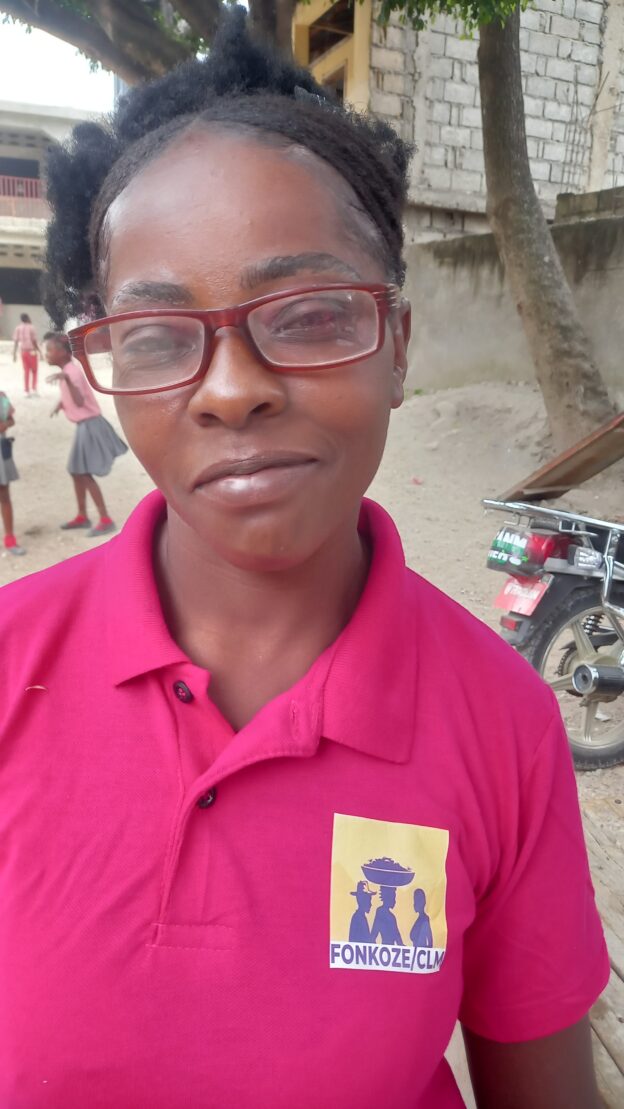Roselène graduated from the CLM program on December 18, 2023. She and her husband live with three of their children in Lagwas, a small area of western Savanèt, close to Haiti’s border with the Dominican Republic.
The couple has five children, but two of them were sent to live with other families. Roselène and her partner Elinord could not afford to take care of them. Kenson, the one child living with them who was old enough for primary school, could not attend. His parents couldn’t send him. They lived in a rented room and earned what they could working in their neighbors’ fields.
But the pair joined the program, and they got to work. “We started saving 500 gourds every week in our VSLA.” At first, they used the stipend they received from the program to build their savings. Once they stopped receiving the stipend, they started setting aside money from what they could earn through field work. Before their VSLA’s first cycle was complete, Roselène had borrowed 45,000 gourds to make the downpayment on the land that she and Elinord needed to construct a house.
After paying back that first loan, the couple took out additional ones. Roselène has used them mainly to buy additional livestock. She now has four goats, a pig, some poultry, and a small cow. With each loan, she makes a new investment. She repays the loans with money that Elinord earns working in the DR.
All this forces a question: Elinord’s capacity to earn money in the DR was neither created nor even increased by CLM. Why was the pair unable to build any wealth before they joined the program?
Rosemène’s answer is simple. “We never saw what we could do. No one encouraged us.”
Their lives have changed. Kenson, their son, is now in school. They eat two meals a day. They have livestock worth almost 67,000 gourds, or over $515. And Roselène has a plan. In the next months, the second cycle of her VSLA will close, and she will receive what she has saved with interest. She plans to buy farmland so she can work for herself, and not always for others.
